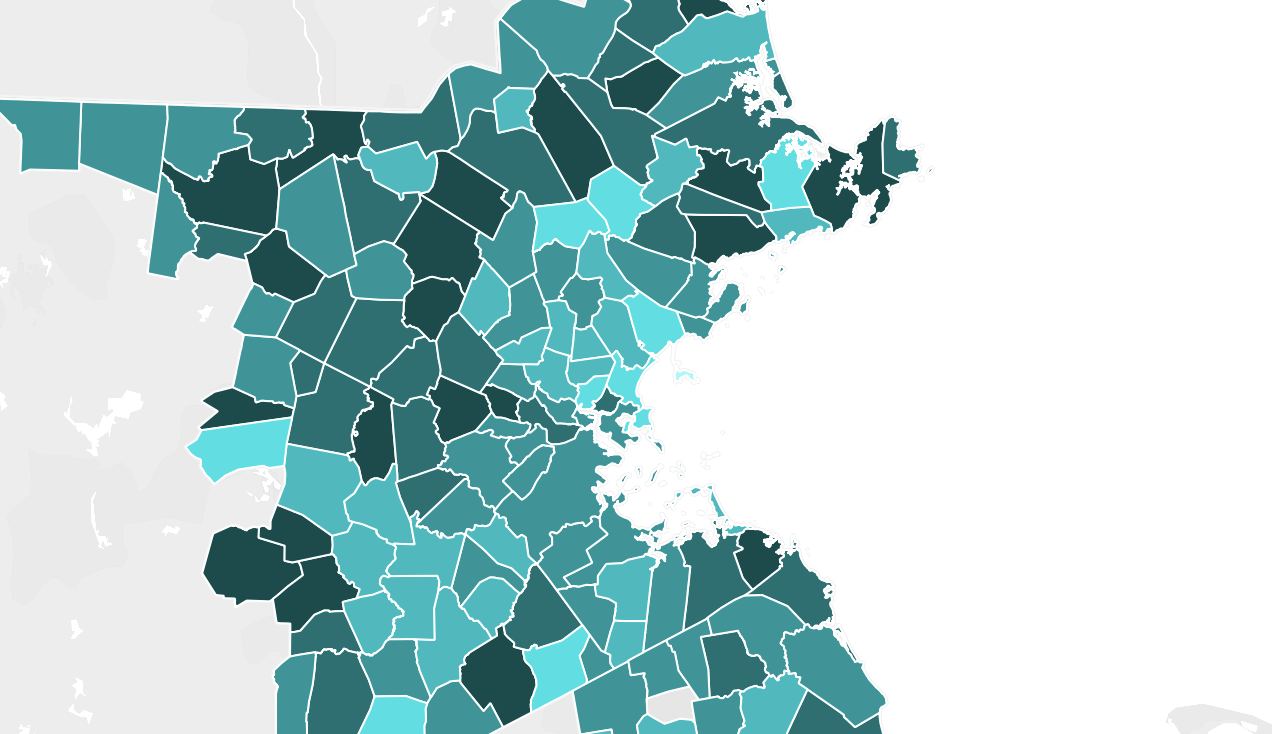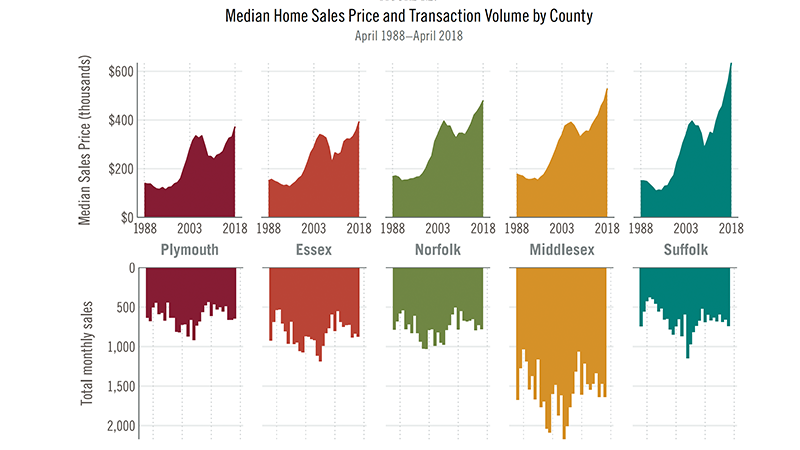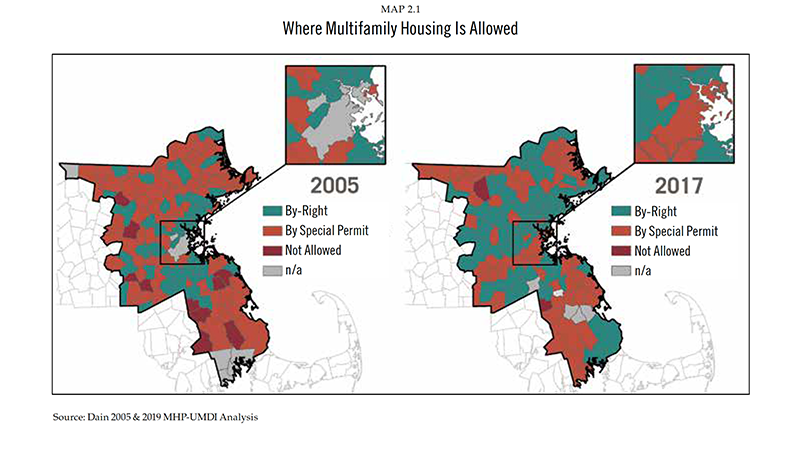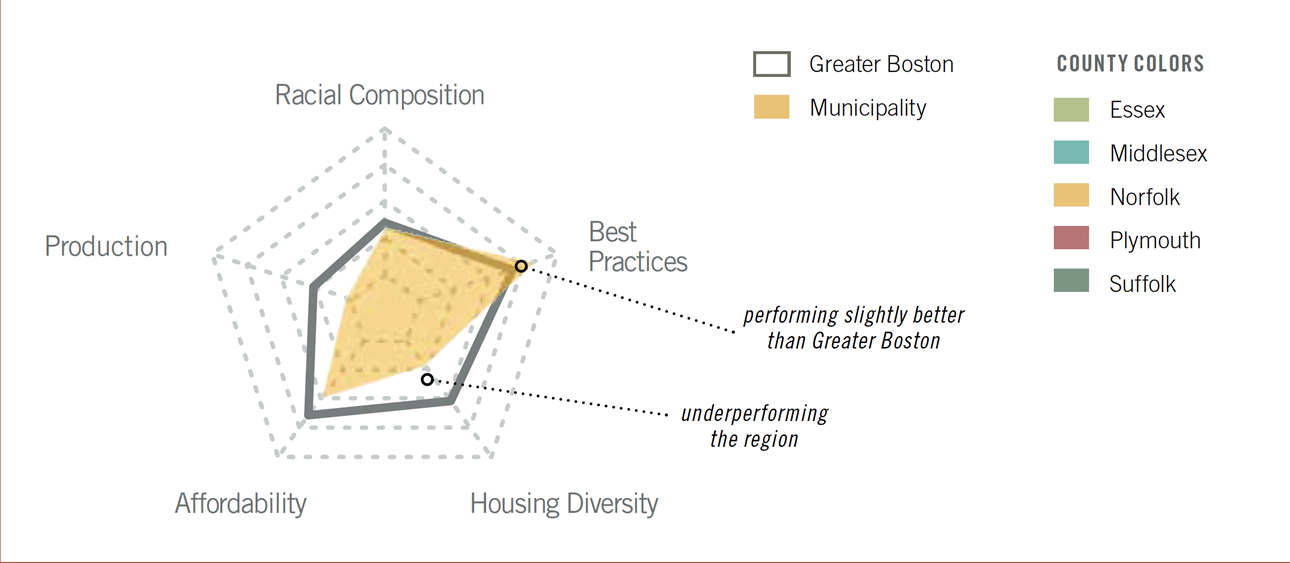AUTHORS
Alicia Sasser Modestino
Clark Ziegler
Tom Hopper
Calandra Clark
Lucas Munson
Mark Melnik
Carrie Bernstein
Abby Raisz
WITH ASSISTANCE FROM:
Ami Campbell, Jennifer Goldberg, Susan Strate, Thomas Peake, Nicoya Borella
EDITORS
Rose Corcoran, Soni Gupta and Sandy Kendall, The Boston Foundation
Luc Schuster, Boston Indicators

The Greater Boston Housing Report 2019 by Chapter
Introduction and Executive Summary
Chapter 1: Core metrics
In this chapter, we assess how Greater Boston is performing in meeting the region’s need for housing using a set of core metrics. We start by examining recent demographic trends and economic conditions that drive housing demand and highlight the lack of affordability for certain groups.
We then assess the region’s housing stock along with trends in production and projected future demand, and discuss recent trends in rents and home prices, and compare Greater Boston to other metropolitan areas to provide some context for how the region’s continually high demand and constrained supply are affecting affordability relative to other places.
Next, we provide a preliminary look at production in communities within Greater Boston that have good transit access to assess how well the region is taking advantage of rail infrastructure to encourage denser housing development, and we highlight the region’s continued housing instability in the wake of the Great Recession. Recent trends in foreclosure, eviction and homelessness demonstrate that there are many households still struggling to maintain housing security within Greater Boston.
For the purposes of this report, “best practices” refer to local land use policies and practices that are thought to lead to increased housing production, more diverse housing stock, and more affordable housing. Understanding the context of housing production and land use regulation in Massachusetts is important before delving into an exploration of best practices at the local level.
In this chapter, we explore the use of best practices in Massachusetts, changes since the mid-2000s, and recommendations for increasing housing production through the strategic use of best practices in the future.
This chapter examines trends in racial segregation across communities in Greater Boston using several different metrics and compares the region to similar metropolitan areas. We then explore the consequences of racial segregation in limiting opportunities for traditionally underrepresented populations in terms of income, job opportunities, school quality, and environmental health. Finally, we investigate the link between housing production and racial segregation over time at the municipal level.
While it may be difficult to conclude that these links are causal given the data that is currently available, our goal is to highlight how changes in production are correlated with racial segregation across the Greater Boston region. We hope that our analysis will serve to stimulate a policy discussion about the achievement of broad regional social goals, such as reducing the level of racial segregation, within the context of local zoning control.
No “report card” can be complete without grades, so this final chapter assesses each of the 147 cities and towns in Greater Boston using a set of metrics relating to five key areas: local housing production, racial composition, adoption of best practices, housing stock diversity, and affordability. An explanation of the grading for each category is described in detail below alongside a summary of a combined regional measurement for each category.






